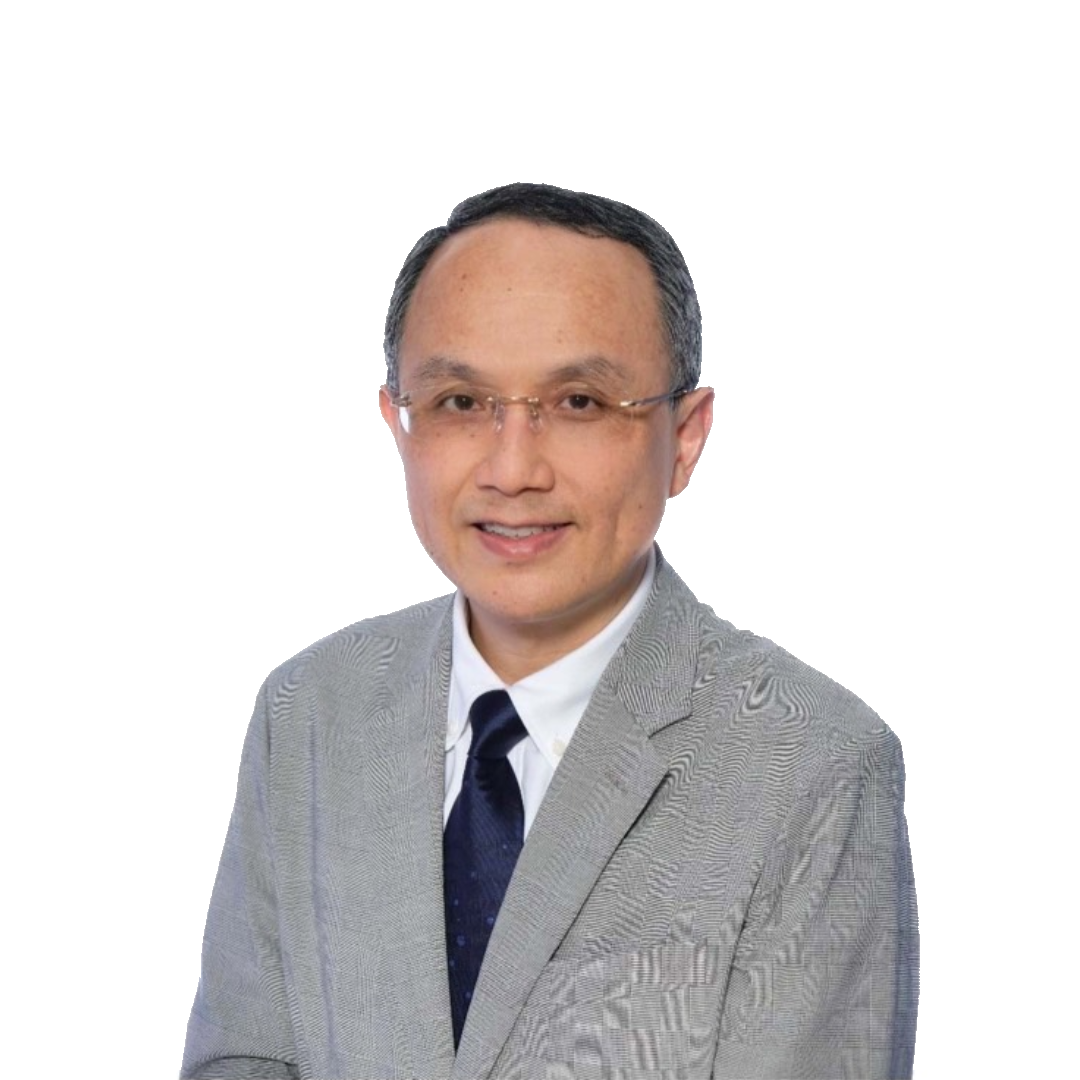
You have an account? Login

| Topic | Fracture Modeling of Plate Bending using Graph-based Finite Element Analysis (GRAFEA) |
| Abstract | In this work, a thermodynamically consistent fracture model for
brittle and quasi-brittle plates based on Graph-based Finite
Element Analysis
(GraFEA) is proposed. Previous studies have considered a small
strain-based
theory to describe the fracture of quasi-brittle and brittle
elastic solids
[1,2]. These studies formulated a graph-based approach in two
and three
dimensions, implementing it in Abaqus/Explicit using a
vectorized user material
subroutine (VUMAT). However, conducting a three-dimensional
simulation can be
computationally demanding when dealing with thin structural
elements like plates
and shells, where the planform dimensions are much larger than
the thickness. To
address this, a small deformation-based First-order Shear
Deformation Theory
(FSDT) is used to describe the deformation kinematics of the
plate. The
fundamental idea of this model is the presence of multiple
microcracks
traversing through a material point on the top and bottom
surfaces of the plate.
These microcracks are represented by crack planes, oriented at
specific angles
relative to the x-axis. The probabilistic description of the
state of a crack
plane and its evolution is based on the formulation described in
the previous
studies [1,2]. An elastic corrector-fracture predictor method
and a
velocity-verlet algorithm are used to solve the static and
dynamic versions of
the governing equations in a finite element framework. The
proposed formulation
has been verified by comparing the numerical results from the
GraFEA 3D
simulation. The structural response and fracture topology of the
plate under
quasi-static and impact loading conditions are also studied. A
mesh sensitivity
and crack plane orientation sensitivity study has been
investigated.
|

| Topic | Holistic Performance of Mass Timber Structures |
| Abstract | Structures need to be designed so that they can withstand
everyday loads in an optimised manner. Structures are also
expected to attain an adequate level of performance when exerted
by extreme events such as high velocity winds, seismic loads,
fires, etc. In addition, it is expected that these structures
will be robust and resilient allowing them to respond safely to
solicitations outside the design bounds and to recover their
functionality rapidly from any challenging event. The
introduction of new materials or products require revisiting the
manner in which structures are designed, this is particularly
the case when the drivers behind the use of these materials or
products do not emphasize structural performance. In this case,
designers need to respond in a holistic manner to deliver
effective structures while responding to drivers that might be
stronger than those governing structural design. The use of mass
timber in complex buildings is one of those cases where drivers
such as environmental, financial, aesthetic, user experience,
etc. all need to be considered in conjunction with structural
requirements. This presentation will explore structural design
using mass timber in a holistic manner. It catalogues the
different variables affecting building design and extracts the
key variables to be considered. Through this process it is
established that the safe performance of the structure in fire
is the variable that controls the design decisions. This
presentation finishes by proposing a methodology to design mass
timber structures in a manner that delivers an adequate fire
safety performance while all other design variables are
considered.
|



| Topic | Disrupting the Construction Industry through Digital Transformation |
| Abstract | Construction digitalisation is considered as a pragmatic
technology to enhance the efficiency, quality, safety and
smartness of construction projects. While building information
modelling, drone, sensors, computer vision and artificial
intelligence have been widely used nowadays, much of the
digitalisation effort is still on the construction stage. To
disrupt the construction industry, a well-defined digitalisation
plan right from the start to the end of the building lifecycle
should be formulated so that useful digital data can be
solicited not only for the planning, design and construction
purposes, but also for uplifting the operational efficiency and
reliability of built facilities. Digital transformation,
therefore, requires a shift from the current project-based
digitalisation mindset to a multifaceted common digital data
sharing paradigm. This would pave way for materialising the
goals of smart, sustainable and resilient building,
infrastructure and city development.
|

| Topic | Towards net-zero: Sustainable materials and Modular prefabricated construction |
| Abstract | It is essential to accelerate the push towards reducing
emissions from buildings and infrastructure projects and
operations. Research and innovation are key drivers of a
circular economy. Taking a circular economy approach offers the
construction industry a major opportunity to deliver
decarbonisation targets and whole-life efficiencies.
Prefabrication techniques help to achieve sustainable solutions.
This presentation will explore recent trends in prefabricated
construction and recent projects on using waste materials to
develop upcycling solutions. The use of recycled materials and
recovered resources has to be included in specifications and
therefore will be mandatory in projects in the future. Some of
the urgent research required will also be discussed in the
presentation.
|

| Topic | An Overview of Earthquake Engineering Research Activities in Thailand |
| Abstract | Before the 1990s, awareness of earthquake risk in Thailand was
low, earthquake research was at a primitive stage, and there
were no requirements for earthquake safety of buildings and
structures. In the early 1990s, several papers on Probabilistic
Seismic Hazard Analysis (PSHA) became available, allowing
comparison of the hazard level in Thailand with that of many
other countries. Maps from PSHA, showing that the northwestern
and northern regions of Thailand are at moderate to moderately
high seismic hazard, provided a compelling rationale for the
introduction of the first ministerial regulation for
earthquake-resistant construction in 1997. Improved PSHA maps
became available in the late 2000s and provided the key
parameters for design-basis ground motions in the first national
standard for earthquake-resistant design of buildings and
structures, designated DPT -1302, issued in 2009 [1-3].
In 2004, a magnitude 9 megathrust earthquake occurred in the Andaman Sea, triggering a series of destructive tsunami waves that hit the coastal areas of many countries in the Indian Ocean. The tsunami disaster claimed more than 8,000 lives in Thailand. Many high-rise buildings in the capital city Bangkok were also strongly shaken by seismic waves from this distant source. This event greatly increased public interest and awareness of earthquake disasters with low probability but potentially large impacts. This led to the establishment of the National Disaster Warning Center (NDWC) and seismic design requirements for high-rise buildings in Bangkok and four surrounding provinces in the late 2000s. Now that a tsunami warning system has been established, current research is focused on improving the tsunami evacuation process at various risk sites through the use of agent-based simulations [4-5]. The effectiveness of various measures, such as vertical evacuation shelters, is being studied. On the effect of distant large earthquakes on high-rise buildings in Bangkok, several studies have been conducted on the amplification of seismic motions by the Bangkok soil basin. In the most recent study, we used an array microtremor measurement technique to determine the shear wave velocity profile down to 1000 m below the ground surface at various locations throughout the basin. Based on this work and the work of PSHA, a set of amplified ground motion spectra for 10 different microzones in the Bangkok basin was produced and included in the revised version of the DPT -1302 standard in 2019 [6-8]. The spectra clearly show that the extreme ground motions are long-period motions that have a greater impact on long-period structures such as high-rise buildings. For such structures, the response of the structures to ground motions is usually determined using a method called Response Spectrum Analysis (RSA). This method was carefully reviewed and compared to a more advanced and reliable method called nonlinear response history analysis (NLRHA). It was found that the RSA method significantly underestimated some important responses, particularly seismically induced shear forces. As a result, a new method called Modified Response Spectrum Analysis (MRSA) was proposed and recommended in the 2019 DPT -1302 standard [9]. In 2014, a magnitude 6.3 earthquake occurred in Chiang Rai, a northern province of Thailand, damaging more than 10,000 low-rise buildings and some infrastructure in the rural region. The impact clearly raised public awareness of earthquake risk and encouraged the implementation of earthquake-resistant designs. As most of the buildings were reinforced concrete frames with masonry infill walls, the observed damage demonstrated the importance of nonstructural masonry walls in modifying the structural response to seismic loading. However, in design practice, such effects of masonry walls were generally ignored. This led to several extensive studies on the effects of masonry infill walls on RC concrete frame buildings [10-12]. In addition, there have also been many studies on various seismic retrofit measures for low-rise concrete buildings, such as column jacketing, buckling restrained braces, fiber-reinforced-polymer wrapping on columns, base isolation, etc. Some demonstration projects were carried out in Chiang Rai and Chiang Mai provinces, focusing on seismic retrofitting of school buildings with the first soft story [13-14]. More intensive activities and studies on seismic retrofitting of existing vulnerable structures are expected in the near future. Finally, we would like to point out that there are many ongoing research activities that are not mentioned in this presentation. These include, for example, the development of a regional tectonic model, the paleoseismic investigation of active faults, the assessment of liquefaction hazards, the development of catastrophe models for the cities of Chiang Mai and Chiang Rai, the seismic performance of precast concrete elements, the structural health monitoring of high-rise buildings, etc. With a better understanding of earthquake risk through all this research, we hope to be able to save more lives in future earthquake disasters in Thailand. References
[1] Ornthammarath, T., Warnitchai, P., Worakanchana, K., Zaman,
S., Sigbjörnsson, R., and Giovanni Lai C.: Probabilistic seismic
hazard assessment for Thailand, Bulletin of Earthquake
Engineering, 9, 367-394, 2011.
[2] Ornthammarath, T., Warnitchai, P., Chan, C. H., Wang Y., Shi X., Nguyen, P. H., Nguyen, L. M., Kosuwan, S., and Thant, M.: Probabilistic Seismic Hazard Assessments for Northern Southeast Asia (Indochina): Smooth Seismicity Approach, Earthquake Spectra, 36, 1 (suppl), 69-90, 2020. [3] Department of Public Works and Town & Country Planning, Ministry of Interior, Royal Thai Government.: National Standard DPT-1302: Seismic Resistant Design of Buildings and Structures, 113 pp., 2009. [4] Trumikaborworn, N., Latcharote, P., and Warnitchai, P.: Tsunami Evacuation Simulation using Multi-Agent Simulation: A Case Study of Khao Lak, Thailand, Proceeding of 17th World Conference on Earthquake Engineering, Sendai, Japan, September 2020. [5] Trumikaborworn, N., Latcharote, P., Suppasri, A., and Warnitchai, P.: Crafting Effective Tsunami Evacuation Measures using Multi-agent Simulation: A Case Study of Khao Lak, Thailand, Proceeding of 14th Aceh International Workshop and Expo on Sustainable Tsunami Disaster Recovery (AIWEST-DR 2022), Sydney, Australia, September 2022. [6] Poovarodom, N. and Plalinyot, N.: Site Characterization in the Greater Bangkok Area by Microtremor Observations, Journal of Earthquake Engineering, 17:2, 209-226, 2013. [7] Poovarodom, N., Jirasakjamroonsri, A., and Warnitchai, P.: Development of New Design Spectral Accelerations for Bangkok Considering Deep Basin Effects, Proceedings of the 16th World Conference on Earthquake Engineering, paper No. 2141, Santiago, Chile, 2017. [8] Jirasakjamroonsri, A., Poovarodom, N., and Warnitchai, P.: Seismic Site Characteristics of Shallow Sediments in Bangkok Metropolitan Region and Their Inherent Relations, Bulletin of Engineering Geology and the Environment, 2018. [9] Khy, K., Chintanapakdee, P., Warnitchai, P., and Wijeyewickrema, A.C.: Modified Response Spectrum Analysis to Compute Shear Force in Tall RC Shear Wall Buildings, Engineering Structures, 180, 295-309, 2019. [10] Niyompanitpattana, S. and Warnitchai, P.: Effects of masonry infill walls with openings on seismic behaviour of long-span GLD RC frames, Magazine of Concrete Research, 69, 21, 1082-1102, 2017. [11] Worrakulsajja, W., Srichai, J., and Leelataviwat, S.: Seismic Design of RC Moment-Resisting Frames with Concrete Block Infill Walls Considering Local Infill-Frame Interactions, Bulletin of Earthquake Engineering, 18, 6445–6474, 2020. [12] Wararuksajja, W., Srechai, J., Leelataviwat, S., Sungkamongkola, T., and Limkatanyu, C.: “Seismic Design Method for Preventing Column Shear Failure in Reinforced Concrete Frames with Infill Walls, Journal of Building Engineering, 44, 102963, 2021. [13] Leelataviwat, S., Warnitchai, P., Tariq, H., Naiyana, N., and Wararuksajja, W.: Comparison of Seismic Strengthening Methods for Soft-Story RC Frames using Buckling Restrained Braces and Concrete Jacketing, Proceedings of the International Conference in Commemoration of 20th Anniversary of the 1999 Chi-Chi Earthquake, Taipei, Taiwan, September 15-19, 2019. [14] Leelataviwat, S., Warnitchai, P., Hsiao, F-P., Weng, P-W., Hwang, S-J., and Naiyana, N.: Taiwan-Thailand Collaborative Project on Seismic Strengthening of Soft-Story School Buildings in Northern Thailand, Proceedings of the 8th Asia Conference on Earthquake Engineering, Taipei, Taiwan, November 9-11, 2022. |


| Topic | The Evolution and Innovation of Civil Engineering Technology in Japan |
| Abstract | The Japan Society of Civil Engineers (JSCE) is celebrating its
110th anniversary, and its history has been an evolution and
innovation in civil engineering technology. As one of examples,
the development of excavation technology in relation to mining
tunnels is discussed. Mining tunnel construction has
traditionally been carried out under severe conditions such as
vibration, noise, dust, and other harsh working environments,
and also under hazardous circumstances, such as face collapse,
etc. The tunnel construction has been carried out by special
skilled workers called "tunnel miners. In recent years, ICT has
been used to improve safety, quality, and the working
environment, and mechanization has contributed in increasing the
speed of construction (progress rate), and thus, the work
productivity has progressed significantly by way of achieving
automation and labor saving.
How far will the tunneling technology advance in the future? In
this lecture, the future state of tunnel construction sites,
where AI and remote technology will be introduced through video
and animation.
|

| Topic | Bio-cementation Technique for Soil Liquefaction Mitigation |
| Abstract | With growing ecological awareness, environmentally friendly and
sustainable construction methods are desired. Microbial induced
carbonate precipitation (MICP) has gained substantial interest
in geotechnical engineering. In this talk, the effect of
different calcium sources on MICP is presented. Three calcium
sources, including calcium chloride, calcium nitrate, and
calcium acetate, were selected based on their applicability and
solubility. The fall cone tests and triaxial
consolidated-drained tests were performed at the same proportion
of calcium to urea, 1:1, with the concentration 0.5 M, and
single-phase injection. The results indicated that the
uniformity of specimen was increased by controlling the pH value
of MICP treatment solution at 8.50–8.70 before injecting the
solution into the specimen. Calcium nitrate exhibits the highest
calcite content in treated specimens. Also, we employed an
MICP-enhanced fluid and simulated in-situ grouting to assess the
effectiveness of soil improvement on a local soil. Procedures
for lateral injection in the field with a 65 cm (L) × 50 cm (W)
× 100 cm (H) test pit were established where the uniformity of
treatment was evaluated.
|

| Topic | Towards Intelligent Lifting for DfMA Construction |
| Abstract | Design for Manufacturing and Assembly (DfMA) is a key focus in
Singapore's Construction Industry Transformation Map to enhance
productivity with advanced technologies. DfMA adoption in
Singapore rose to 31% in 2019, with a target of 70% by 2025.
This presentation examines innovative automation technologies to
reduce manual operations and improve construction efficiency
under DfMA. The focus is particularly on the Prefabricated
Prefinished Volumetric Construction (PPVC) whereby free-standing
volumetric modules are prefabricated and prefinished in more
controlled offsite factories. This method further shortens
construction period compared to typical precast approaches.
Despite this, there are still ways to improve productivity of
on-site assembly. A high proportion of time is taken when trying
to fit the unit into its final placement with limited tolerance.
This could be improved with more advanced technologies. An
Intelligent Lifting Frame (ILF) has been developed to
automatically and precisely adjust and stabilize the six degrees
of freedom (DOF) of precast modular components. It further
reduces the rework due to manual operations not meeting the
assembly error tolerance. To sense, measure and guide the DfMA
assembly activities, an intelligent vision navigation system for
assembly is also under research for facilitating the above
intelligent framework to efficiently sense and tune the spatial
position and attitude of PPVC. A digital twin is currently being
developed to provide key information to facilitate the use of
augmented reality for on-site assembly. The module template
approach used to automatically extract the critical parameters
and manage the assembly tolerance will also be presented.
It is believed that the automated technologies in this study
will contribute to the development of robust DfMA eco-system to
make DfMA construction more competitive and enable widespread
adoption.
|

| Topic | Recent global trends in CCUS technologies |
| Abstract | Carbon Capture, Utilization, and Storage (CCUS) is the key
technology to achieve the net zero by 2050. However, current
feasible solution for the large scale CCUS is the geological CO2
storage which is very limited in terms of geological requirement
and potential carbon storage capacity. Meanwhile, mineral
carbonation has been gaining lots of attentions as a viable CCUS
technology. In this talk, main technological challenges for the
mineral carbonation-based CCUS technologies will be discussed
with innovative solutions to resolve the challenges.
Furthermore, global carbon market will be also introduced which
can be co-related with the mineral carbonation technologies.
|

